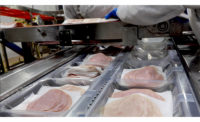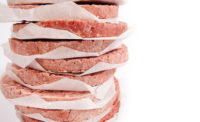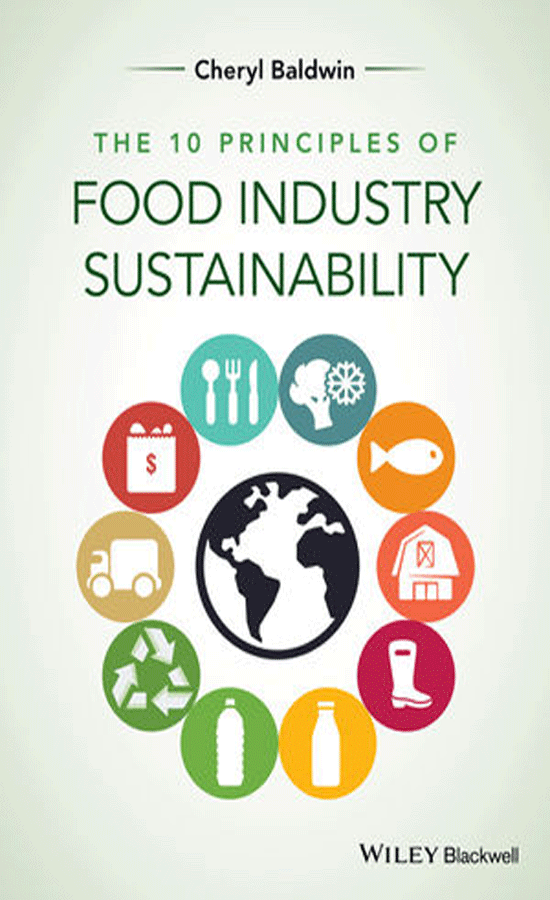Food companies pay a lot of attention to food safety. A new market intelligence report from BIS Research, Global Food Safety Testing Market — Analysis and Forecast (2017-2021), forecasts a 7.2 percent compound annual growth rate for the global food safety testing market. This translates into an estimated market value of $17.7 billion in 2021.
The focus on food safety should come as no surprise. It’s good business. No brand wants to be the source of foodborne illnesses or associated with a recall. Firms work hard to deliver wholesome products, comply with regulatory requirements such as the Food Safety Modernization Act, meet customer requirements and adhere to best practices. Some protein producers and their equipment and materials suppliers have formulated their own standard operating procedures, which exceed regulatory or customer requirements.
As a result, interest in hygienic machines and materials is high, particularly for handling ready-to-eat products. Materials and equipment for interleaving and stacking are no exception. Interleaving equipment dispenses pre-cut flat or folded sheets or die-cuts sheets from rollstock and positions the paper, parchment, film or cardstock under, between or around slices, patties, cuts or other products. Typically located between slicing/forming and stacking operations, the interleaver makes it possible for processors to meet demand for portion-controlled and other pre-packaged products.
Interleaving materials are increasingly certified to meet requirements of the AIB International Consolidated Standards for Food-Contact Packaging or audit schemes approved by the Global Food Safety Initiative such as the Safe Quality Food Program or the British Retail Consortium. Third-party certification confirms interleaving sheets and rollstock are manufactured, packaged and stored under the most hygienic conditions. The certification process typically requires several months to complete and examines every facet of the business including raw material management, safety planning, employee training, operational procedures, traceability, facility conditions, employee actions and documentation. Material suppliers also have designed secondary packaging to ensure the interleaving sheets and rollstock remain clean and sanitary until use.
Automating interleaving and stacking minimizes the risk of product contamination because it reduces handling by operators and environmental exposure. Less handling lowers labor requirements and reduces repetitive motion injuries while improving productivity, count accuracy, product presentation and product release. The higher productivity helps suppliers meet growing demand from quick-service restaurants for portion packs and from retailers for grab-and-go deli products.
Systems meet or exceed regulatory requirements and follow the 10 Principles of Sanitary Design developed by the Equipment Design Task Force of the American Meat Institute, now the North American Meat Institute:
- cleanable to a microbiological level;
- made of compatible materials;
- accessible for inspection, maintenance, cleaning and sanitation;
- no product or liquid collection;
- hollow areas should be hermetically sealed;
- no niches;
- sanitary operational performance;
- hygienic design of maintenance enclosures;
- hygienic compatibility with other plant systems;
- validated cleaning and sanitizing protocols.
“Optimizing the design and performance criteria for equipment and related systems as well as establishing industry-wide specifications benefits the entire industry by promoting one standard design that will help reduce contamination and associated recalls,” according to the Sanitary Equipment Design Fact Sheet, published in November 2018 by the North American Meat Institute.
Designed for quick and thorough cleaning, sometimes in less than five minutes, today’s interleaving and stacking equipment withstands wash-down conditions and eliminates flat surfaces and other areas where product residue, water or bacteria could accumulate. Machine configurations also minimize the chance that interleaving material could become contaminated during set-up, operation or changeover. Other sanitary design features include stainless steel product-contact parts and IP65-rated construction. Antimicrobial belts are a common option and discourage the presence of pathogens and spoilage bacteria.
Stackers often handle a variety of patty sizes and shapes. Variable speed drives match stacker speed to upstream equipment. Integration with metal detectors allows faulty product to be rejected prior to packaging, further supporting food safety efforts and reducing the chance of a recall because of possible foreign matter contamination. NP






